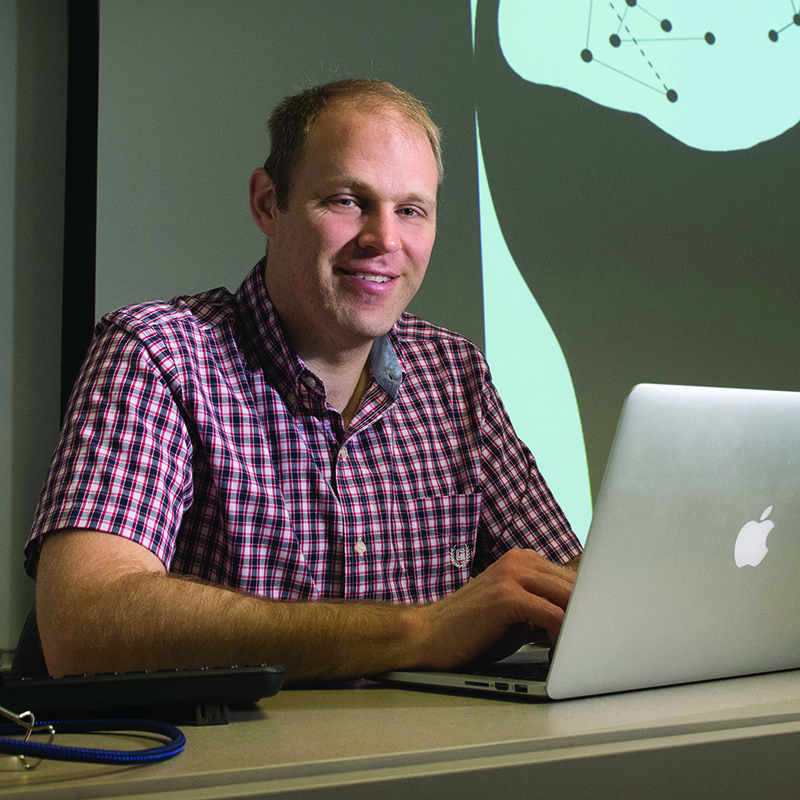
How Do Students Learn Biology
Combining biology, education and cognitive psychology helps students connect knowledge 'chunks'
Experts in a discipline can easily access information from memory within their field of study. An expert’s brain can easily sort and store information, building bigger “chunks” of knowledge, but students are still developing this skill. Joseph Dauer’s research at the University of Nebraska–Lincoln is working to equip students with a skill he refers to as “chunking.”
An assistant professor of life sciences education, Dauer studies how undergraduate students learn biology. Through his research, he believes students can leave the university better prepared for retaining and using the information when they begin their careers.
Dauer found that experts use techniques to help them connect new information they consume to their prior knowledge. He questioned that if experts do that, educators also need to understand how students can develop and implement those skills. He often found his students memorizing the terms, theories, images and ideas but rarely connecting them. He is working to help students take concepts and put them together to explain the biology they observe all around them.
CHUNKING
Experts in biology practice chunking. By chunking, Dauer’s students take information and connect it to a larger picture. Dauer said the ability to chunk can be developed by interpreting and creating through graphs, charts, patterns, equations – any tool that helps network pieces of information. Although it takes time, students eventually will have an easily accessible inventory of deeper understanding on a variety of subjects, Dauer said. This also will help them to better make informed decisions and use the stored knowledge to their advantage.
Dauer believes students can improve the ability to network information throughout college. However, the process of understanding how to draw models of scientific ideas and problems, problem-solve and think critically should begin at the introductory level of understanding biology to help better inform their decision-making.
That begins through chunking information together.
IMPLEMENTING CHUNKING
Dauer wants students to draw connections of life events for themselves and realize how they’ve been shaped. He hopes to challenge them to connect the ideas they are learning in college to the regional and global community around them.
“My view as an instructor is to be more of a supporter of your learning rather than the person that’s in charge of your learning. We need to work on moving that power to the students and away from the instructor. That is what I’m trying to do in the classroom,” Dauer said.
MEASURING GROWTH
“Learning isn’t something you can put a ruler on,” Dauer said. He and his collaborators are developing a library of lessons for an undergraduate introductory biology sequence. The lessons are created so 800 to 1,200 students can use computational models at the University of Nebraska–Lincoln. Other universities also are beginning to learn about and implement Dauer’s learning models, he said.
Dauer has begun to move into deeper understanding of the brain behind the chunking process by working with Carrie Clark, assistant professor of educational psychology at the University of Nebraska–Lincoln. Together, they’re working to better understand the neurobiology of students’ minds by tracing what parts of the brain are functioning and which neurons are activated when students create models of what they are learning.